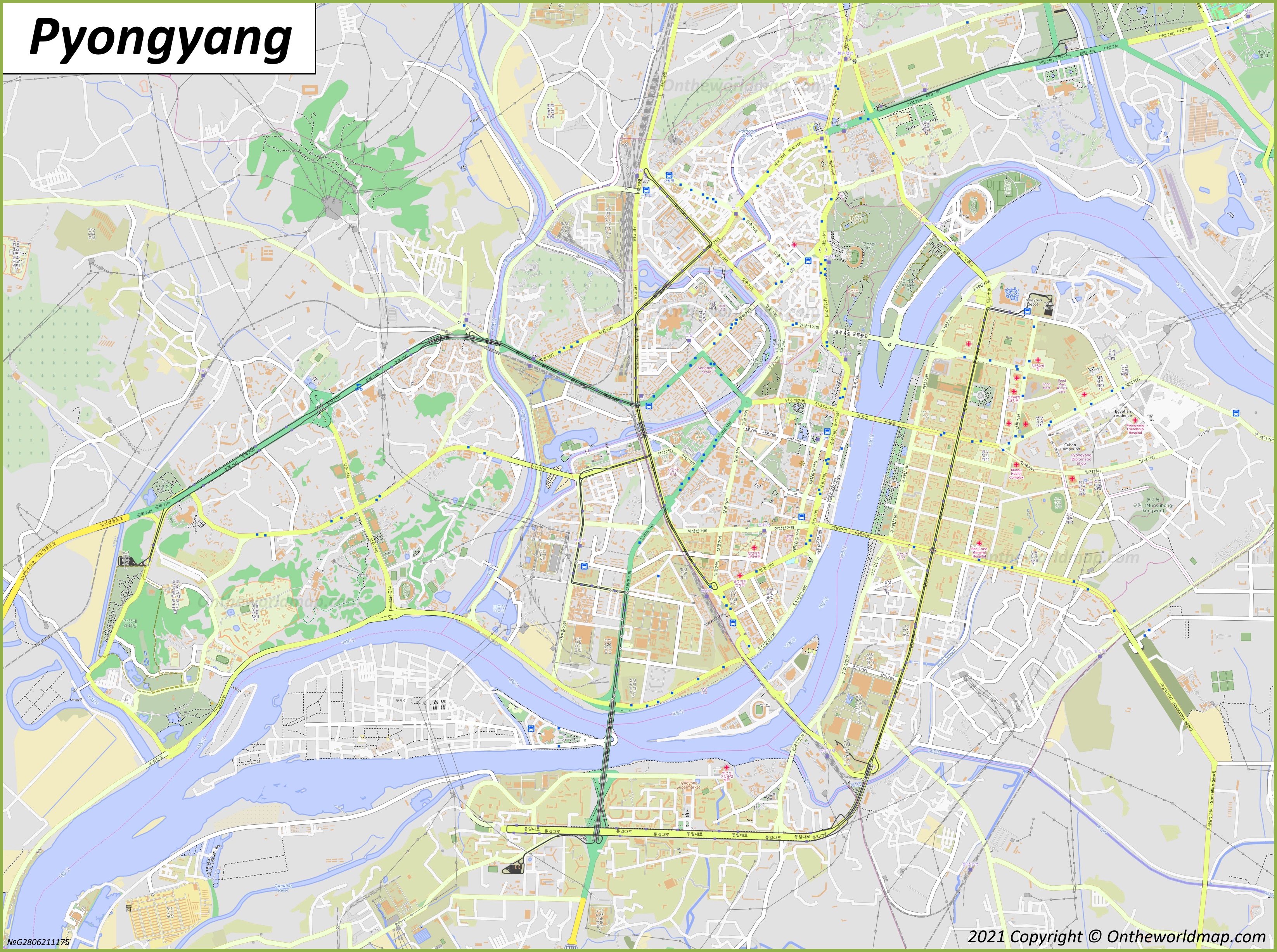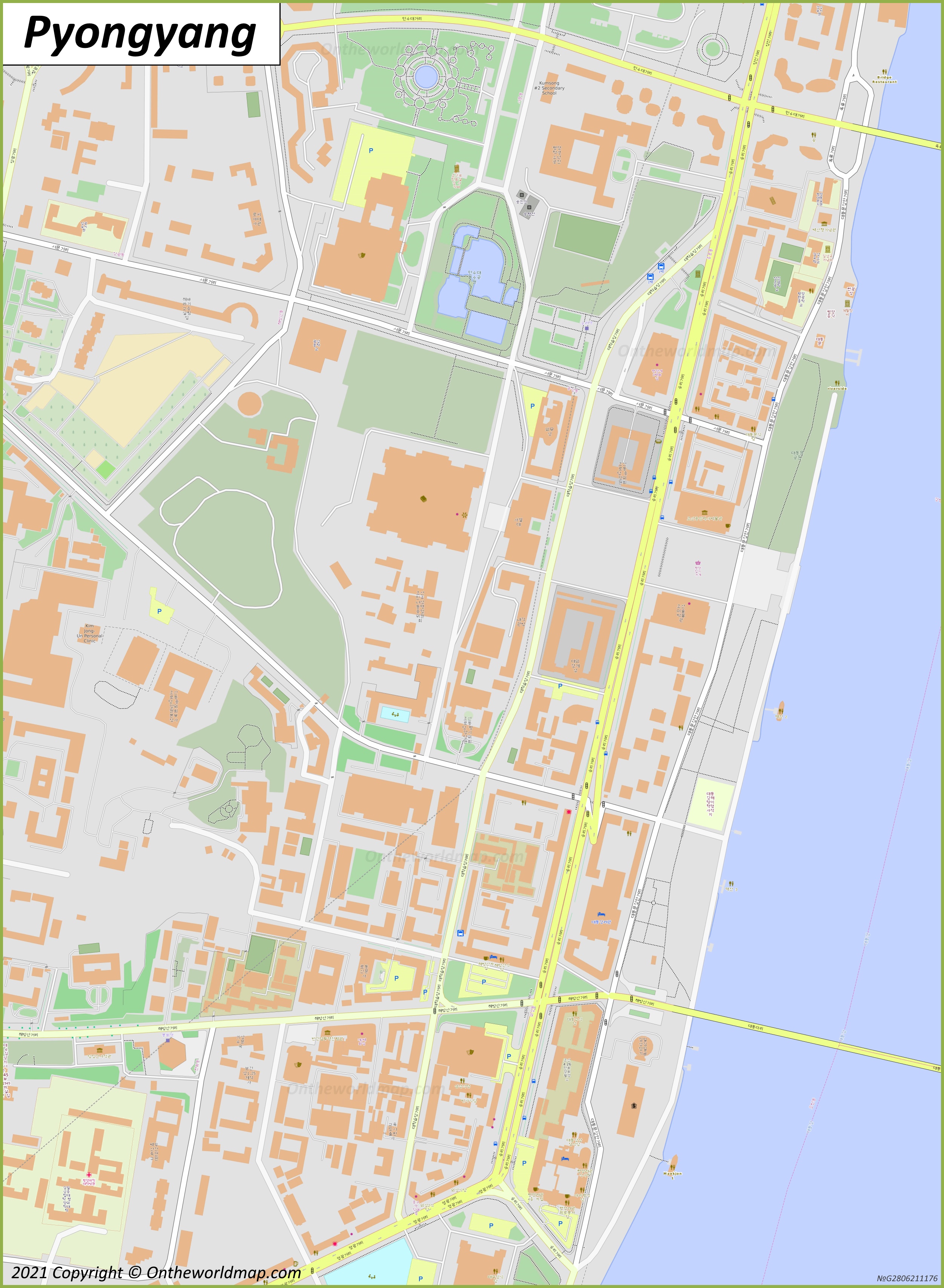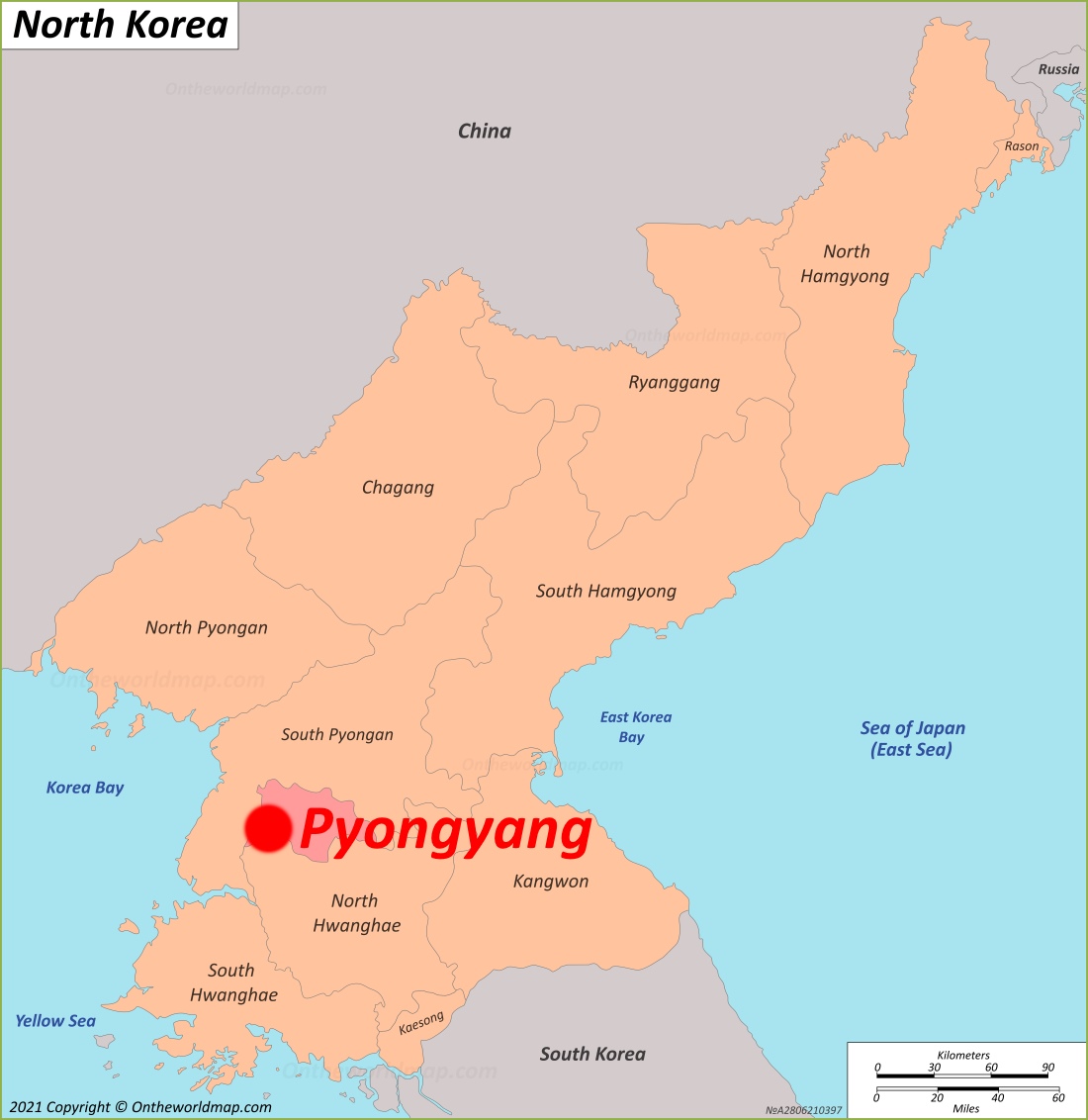Pyongyang Map
Description:
Size: 3292x2454px / 3.15 Mb
Author: Ontheworldmap.com
Map based on the free editable OSM map openstreetmap.org.
You may download, print or use the above map for educational, personal and non-commercial purposes. Attribution is required. For any website, blog, scientific research or e-book, you must place a hyperlink (to this page) with an attribution next to the image used.
Description:
Size: 2503x3415px / 1.91 Mb
Author: Ontheworldmap.com
Map based on the free editable OSM map openstreetmap.org.
You may download, print or use the above map for educational, personal and non-commercial purposes. Attribution is required. For any website, blog, scientific research or e-book, you must place a hyperlink (to this page) with an attribution next to the image used.
Online Map of Pyongyang
About Pyongyang
Pyongyang is the capital and largest city of North Korea (DPRK), located on the Taedong River in the country's western region. With a population of approximately 3.2 million people, it serves as the political, economic, and cultural center of the nation. The city's name translates to "Flat Land" or "Peaceful Land" in Korean.

The history of Pyongyang dates back to ancient times, with archaeological evidence suggesting human settlement as early as 1800 BCE. The city served as the capital of various Korean kingdoms throughout history, including the Goguryeo Kingdom (37 BCE - 668 CE). After the Korean War (1950-1953), Pyongyang underwent massive reconstruction and transformation into a planned city, featuring wide boulevards, monumental architecture, and numerous public spaces designed according to socialist urban planning principles.
The city's architectural landscape is dominated by notable landmarks such as the 105-story Ryugyong Hotel, the world's tallest unoccupied building, and the Juche Tower, which stands 170 meters tall and symbolizes the state's official ideology. The Kim Il-sung Square, the city's central plaza, regularly hosts military parades and mass celebrations. The Arch of Triumph, built to commemorate Korean resistance to Japan, stands as the world's tallest triumphal arch at 60 meters.
Transportation in Pyongyang includes a two-line metro system, known for its ornately decorated stations featuring revolutionary themes and artwork. The city also maintains a fleet of trolleybuses and trams for public transportation. The Sunan International Airport serves as the main gateway for international visitors, though access remains strictly controlled.
Educational and cultural institutions in the city include Kim Il-sung University, North Korea's most prestigious academic institution, the Grand People's Study House, which serves as the central library, and the Mangyongdae Children's Palace, where students participate in extracurricular activities. The city also houses various museums, including the Korean Revolution Museum and the Victorious Fatherland Liberation War Museum.
Modern Pyongyang features several entertainment venues, such as the May Day Stadium, the world's largest stadium by capacity, hosting the famous Mass Games performances. The city's infrastructure includes the recently developed Mirae Scientists Street and Ryomyong Street, showcasing modern residential complexes and amenities for the city's elite residents.
The Facts:Province: Pyongyang City.
Population: ~ 3,157,538 (2021).
Maps of North Korea
Cities of North Korea



